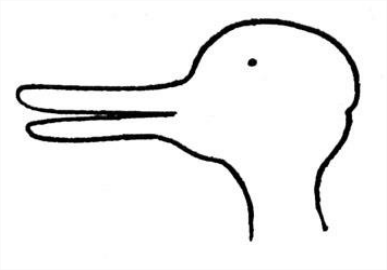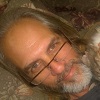6.2: Thomas Kuhn
- Page ID
- 17597
The Positivists and Karl Popper offer attempts to describe and develop rational methods for scientific inquiry. In so doing, they offer normative theories of scientific practice. That is, they offer views about how scientific inquiry should proceed and what counts as good scientific practice. Kuhn’s philosophy of science is inspired by the history of science and seeks to describe how science actually develops. Kuhn’s undertaking is not aimed at revealing universal norms of rational scientific practice. But his views have been taken by some to imply that the development of science is not guided by general norms of rationality, at least at crucial revolutionary periods of theory change.
Kuhn describes three stages in the development of a science. The first stage is called “pre-paradigm science.” In pre-paradigm science, people seeking to understand an observed phenomenon share no common stock of background theory. Each inquirer essentially starts from scratch. Under these circumstances, very little progress is made. We have nothing resembling a tradition that can be passed from one person on to her students for further development and investigation. The various theories of the nature of the world proposed by pre-Socratic philosophers might be considered an example of pre-paradigm physics.
At some point, someone develops an account of the observed phenomenon that has enough substance and explanatory power to attract the attention of a community of individuals who will then carry on inquiry along the proposed lines. This marks the beginnings of normal science. Kuhn calls the sort of account of the observed phenomenon that is required for this to happen a paradigm.
A paradigm consists of the following four things:
- A body of theory including laws: For instance, the basic laws of motion.
- Background metaphysical assumptions: For instance, that there is an external world and that our senses provide a reasonably reliable guide to its nature, that we share common objects of perception, etc.
- Values: Here we have in mind primarily epistemological values including norms of rationality. The idea here is that a paradigm tells you what counts as a phenomenon that requires explanation and provides a standard for what counts as an adequate explanation of that phenomenon.
- Exemplars: These are textbook applications of the theory to the phenomenon it is intended to explain. Classical physics is taught through exemplars that include applying Newton’s laws to swinging pendulums and forces exerted on springs.
Normal science, the second of Kuhn’s three stages, is carried out within a paradigm. Working within a paradigm, the scientist normally accepts the core elements of the paradigm as dogma. The scientist’s job in the stage of normal science is to work out the details of the paradigm without calling into question the central laws of the paradigm, or the epistemic standards it presupposes. In the normal stage, we can think of science as puzzle solving. Investigators are not advancing bold new theories, but applying the accepted theoretical framework in new and novel sorts of cases. During normal science, a paradigm gets worked out in detail.
In the course of normal science, problems that resist resolution with the paradigm often arise. If these “recalcitrant” problems remain long enough, they become what Kuhn calls anomalies. As the details of a paradigm get worked out, the anomalies become harder and harder to ignore. Researchers in need of projects may focus more and more scrutiny on the remaining anomalies. Continued and intensified but unsuccessful attempts to resolve anomalies can give rise to a crisis in normal science. Such a crisis makes it possible to call into question core elements of the paradigm that had been previously held dogmatically.
Persistent anomalies in a science can provoke a crisis in which the paradigm itself is called into question. In this atmosphere, it is possible for scientists to propose and win wide acceptance for significant changes in the theoretical framework. Until persistent anomalies provide a crisis, however, the social conditions aren’t ripe for revolution. Even if someone had great revolutionary ideas, they simply won’t get a hearing with the community since it is committed to working out the details of the standing paradigm. Revolutions in thinking can’t happen until the community is convinced that the old paradigm is irrevocably broken. When this does happen and an appropriate alternative to the old paradigm is developed and proposed, then and only then can what Kuhn calls a scientific revolution happen. In a scientific revolution, the scientific community abandons one paradigm in favor of another.
Once a new paradigm takes hold in the scientific community, normal science is resumed, the details of the new paradigm begin to get worked out and normal science continues until a new batch of anomalies emerges and provokes the next crisis.
A key insight of Kuhn’s is that science is a community effort. We often hold a “great genius”vision of the history of science where the fabulous insights of very special individuals are what drive science forward. Kuhn would say this is a distorted picture. The great geniuses like Newton or Einstein can only launch a revolution in scientific thinking when a broader community of inquirers have prepared the field and created the conditions for the germination of the seeds of a revolution in thinking. The history of science needs to be understood in terms how these broader communities progress to the point where revolutionary thinking is called for and can be fruitful. The great insights and discoveries never happen in a social vacuum.
Kuhn thinks that the paradigm shift that occurs in the course of a scientific revolution is comparable to a gestalt switch as in the duck/rabbit image below.

Seeing this image as a duck blocks out seeing it as a rabbit. Something similar happens in the case of a paradigm shift. In a paradigm shift one drops one conceptual framework in favor of another. When we grasp and evaluate the claims made in normal science, we do so in the context of acceptance of a paradigm. Kuhn suggests that the very meaning of the claims made in paradigm-based normal science can only be comprehended relative to the conceptual framework of that paradigm. A result of this is that from the perspective on one paradigm, we are never really in a position to evaluate the claims of normal science under a different paradigm. In this sense, paradigms are said to be incommensurable (lacking any common measure or independent standard of comparison).
It is tempting to see the cycle of normal science and revolutionary science as a Popper style process of conjecture and refutation at the level of paradigms. However, Kuhn maintains that paradigms are never exactly refuted by intractable anomalies. Rather, when the scientific community enters a period of crisis and an attractive alternative to the old paradigm emerges, the community gives up on the old paradigm and adopts the new one. Paradigms are not so much refuted as abandoned. This raises serious questions about whether paradigm shifts in scientific revolutions can be understood as rational processes. They would seem not to be if we think of human rational processes as in some way rule driven like logical rules of inference. But we might instead take Kuhn be revealing a richer view of human rationality.
On Kuhn’s view, the methods and standards of science get articulated and refined through periods of normal science and are liable to undergo bigger shifts in periods of scientific revolution. What counts as good scientific inquiry and investigation cannot be specified independent of its history. We figure out what works as we encounter new challenges. The history of science reveals the practice of science to be dynamic and adaptive. Creativity and resourcefulness go into the hard-earned advances in our understanding of the world.
The broader moral of this story is that we should be highly suspicious of any attempt to boil the methods of science down to any specific series of steps. Rather, a good understanding of the many methods of science can only be had through a study of its history, its successes, and its failures. And even at this, our appreciation of the methods of science must remain open ended. The story of science is far from finished, and so our understanding of its methods is likewise incomplete.


